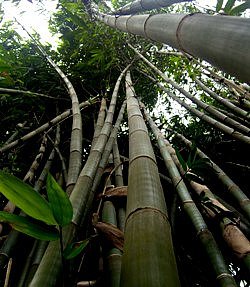Both sexual and asexual methods are applicable in propagating molave or tugas trees (Vitex parviflora Juss.).
Sexual methods consist of using extracted seeds and intact fruits, including wildlings that originate from the embryo within seeds.
Asexual methods include the use of stem cuttings.
This paper is about the propagation of molave using fruits and seeds.
The use of wildlings and stem cuttings as propagating materials is dealt with on another page (click here to read).
But first, the distinction between the fruit and seed of the molave tree.
A molave tree has many tiny flowers (~6-8 mm long), attached to the branches of a panicle (flower cluster like that in rice) having a peduncle (stalk) that emerges from the tip of a stem.
After pollination and double fertilization, each flower develops into a plant organ which is botanically called fruit (click to read What is a Fruit?).

